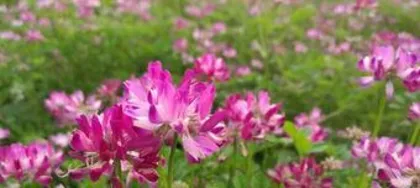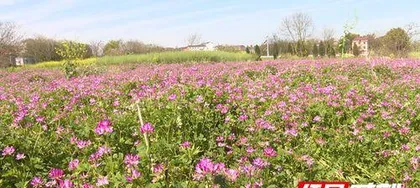Dear gardening enthusiasts, today I want to talk with you about a super practical topic—how to plant Astragalus sinicus. The name Astragalus sinicus, does it sound a bit unfamiliar? Don't worry, it's a little star in the farmland ecosystem of Southern China, not only capable of nitrogen fixation but also improving soil fertility, simply a "green fertilizer" for the fields. Next, let me take you step by step into the world of Astragalus sinicus and uncover the mysteries of its cultivation!
I. Pre-planting Preparation for Astragalus sinicus
1. Site Selection and Soil Preparation: Astragalus sinicus is not very demanding on soil, but loose, well-drained sandy loam or loam soil is more suitable for its growth. Choose a plot with sufficient sunlight, good drainage, and no continuous cropping for planting. In autumn, plow the soil deeply to a depth of 20-30 cm, and apply organic fertilizers such as well-rotted cow manure or chicken manure during the plowing, with an application rate of about 1500-2000 kg per mu.
2. Seed Treatment: Before sowing, soak the seeds in 40°C warm water for 6-8 hours to promote germination. Inoculating the seeds with rhizobium can improve nitrogen fixation and enhance plant vigor. Mix rhizobium powder with fine soil in a 1:10 ratio, then mix it evenly with the seeds.
3. Sowing Time and Method: In the Putian area, the sowing time is from late September to early October. You can use either drilling or broadcasting methods. The row spacing should be 30-40 cm, and the hole spacing 10-15 cm, with 3-5 seeds per hole. The sowing depth is 1-2 cm. After covering with soil, lightly press it down and keep the soil moist until the seedlings emerge.
II. Management During the Growing Period of Astragalus sinicus
1. Water and Fertilizer Management: Astragalus sinicus is sensitive to waterlogging, so ditches should be opened for drainage when there is excessive water. Generally, no base fertilizer is applied when planting Astragalus sinicus. From the seedling stage to before spring, apply compound fertilizer or boron fertilizer as a seedling fertilizer to promote robust seedlings, well-developed roots, early branching, and enhanced cold resistance. After spring and before the jointing stage, apply quick-acting nitrogen fertilizer along with phosphate and potassium fertilizers to significantly promote stem and leaf growth.
2. Field Management: After the seedlings emerge, check them promptly to fill in any gaps and ensure a uniform and strong stand. During the growing period, pay attention to weeding to prevent competition for nutrients. In case of drought, water in a timely manner to maintain soil moisture; during the rainy season, prevent waterlogging which can cause root rot.
III. Pest and Disease Control for Astragalus sinicus
1. Diseases: Common diseases include powdery mildew and rust, which can be controlled with 70% Thiophanate-methyl wettable powder.
2. Pests: Pest damage is most severe during the flowering period. It can be controlled by spraying with pesticides such as imidacloprid, dimethoate, or acephate.
IV. Harvesting and Utilization of Astragalus sinicus1. Harvesting: When harvesting tender stems and leaves, leave them short and neat. The first harvest should follow the principle of "low" and "flat" to facilitate subsequent harvests. For early autumn sowing, harvesting starts about 25 days later, with 4 harvests per mu, yielding 1000 kg per mu. For late autumn sowing, there are 3 harvests, yielding 600-700 kg per mu. For early spring sowing, harvesting is from mid-April to late May, with 3 harvests, yielding 500 kg per mu. For late spring sowing, harvesting is from early July to late July, with 2 harvests, yielding only 400 kg per mu.
2. Utilization: The tender stems and leaves of Astragalus sinicus can be used as feed for livestock such as cattle and sheep, or they can be used as green manure to be returned to the fields to improve soil fertility.
Dear gardening enthusiasts, through these steps, I believe you now have a deeper understanding of how to plant Astragalus sinicus. Let's take action together and contribute to our country's farmland ecosystem! Remember, planting Astragalus sinicus is not only a responsibility but also a joy. Let's enjoy the process and feel the gifts of nature!